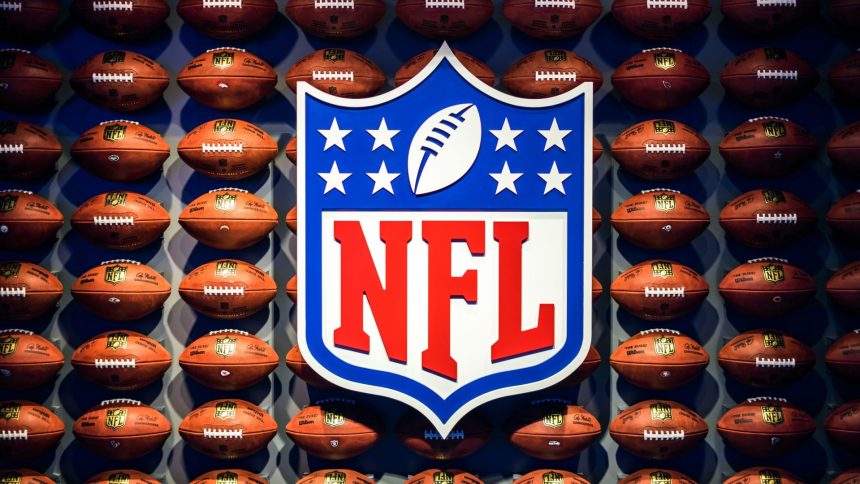In a strategic move to enhance efficiency and improve outcomes, the National Football League (NFL) has offered voluntary buyouts to over 200 of its employees. With a strong position in terms of financial strength and revenue, the league aims to adapt to the evolving landscape of the sports industry and position itself for continued success. This article explores the motivations behind the NFL’s decision, the potential impact on the organization, and its plans for future growth.
Evaluating Efficiency and Enhancing Outcomes
The NFL, like any other organization, faces the challenge of being agile, responsible, and strategic in its operations. In an effort to address these challenges, the league has decided to evaluate ways to enhance efficiency and improve outcomes. By offering voluntary buyouts, the NFL aims to restructure its workforce and align it with its strategic priorities. This move reflects the league’s commitment to adapt and thrive in a rapidly changing sports landscape.
Financial Strength and Revenue Growth
Despite the ongoing challenges in the sports industry, the NFL has demonstrated financial strength and steady revenue growth. In 2022, the league’s revenue reached nearly $12 billion. Commissioner Roger Goodell has set an ambitious goal of achieving $25 billion in annual revenue by 2027. Moreover, NFL teams have been valued at high levels, with the recent sale of the Washington Commanders for a record-breaking $6 billion. These financial achievements provide the league with a solid foundation to invest in its future growth and expansion.
The Buyout Program
The NFL’s buyout program targets employees aged 50 years and older who meet certain criteria based on their years of service in the league office. While the exact number of buyouts the NFL is aiming for is not specified, eligible employees are offered three weeks of salary for every year served, in addition to bonuses. The buyout program allows the league to restructure its workforce and create opportunities for new talent to contribute to its strategic priorities.
Strategy for Future Growth
The NFL’s strategy for future growth encompasses several key areas, including international expansion, the growth of flag football, and the continued development of media and digital operations. The league recognizes the importance of expanding its global presence and reaching new audiences. By investing in international markets, the NFL can tap into new revenue streams and strengthen its position as a global sports powerhouse. Additionally, the growth of flag football presents an opportunity to engage younger audiences and foster a love for the game from an early age. Furthermore, the league aims to leverage the power of media and digital platforms to connect with fans and deliver compelling content.
Impact on the Workforce
The buyout program introduced by the NFL will have a significant impact on the league’s workforce. While the exact number of employees who will accept the buyout is unknown, this strategic move allows the NFL to reshape its workforce and adapt to the changing needs of the organization. The departure of experienced employees may create opportunities for younger talent to step up and contribute fresh perspectives and ideas. The NFL’s commitment to enhancing efficiency and improving outcomes will ultimately benefit the organization as it navigates the future of the sports industry.
Previous Workforce Changes
The NFL’s decision to offer buyouts is not the first time the league has made changes to its workforce. In May, the NFL Network laid off approximately 5% of its employees. These previous workforce changes are indicative of the league’s ongoing efforts to optimize its operations and align its workforce with its strategic priorities. As the sports industry continues to evolve, the NFL remains proactive in making necessary adjustments to stay ahead.
See first source: CNBC
FAQ
1. Why has the NFL offered voluntary buyouts to its employees?
The NFL has offered voluntary buyouts to enhance efficiency and improve outcomes within the organization. This strategic move is aimed at aligning the league’s workforce with its strategic priorities and adapting to the changing sports industry landscape.
2. How does the NFL’s financial strength and revenue growth play a role in this decision?
Despite challenges in the sports industry, the NFL has demonstrated strong financial performance, with nearly $12 billion in revenue in 2022. This financial stability provides the league with the resources to invest in future growth and expansion.
3. Who is eligible for the NFL’s buyout program, and what does it entail?
The buyout program is targeted at employees aged 50 years and older who meet specific criteria based on their years of service in the league office. Eligible employees are offered three weeks of salary for every year served, along with bonuses. The program allows the NFL to restructure its workforce.
4. What is the NFL’s strategy for future growth?
The NFL’s strategy for future growth includes international expansion, the promotion of flag football, and the development of media and digital operations. These efforts aim to tap into new markets, engage younger audiences, and deliver compelling content to fans.
5. How will the buyout program impact the NFL’s workforce?
The buyout program will significantly impact the NFL’s workforce, although the exact number of employees accepting buyouts is not specified. This strategic move allows the league to reshape its workforce and create opportunities for new talent to contribute fresh perspectives and ideas.
6. Are these buyouts the first workforce changes in the NFL, and why are they being implemented?
No, the NFL has previously made workforce changes, including laying off approximately 5% of employees at the NFL Network in May. These changes reflect the league’s proactive approach to optimizing operations and aligning its workforce with strategic priorities in response to the evolving sports industry landscape.
Featured Image Credit: Photo by Adrian Curiel; Unsplash – Thank you!







